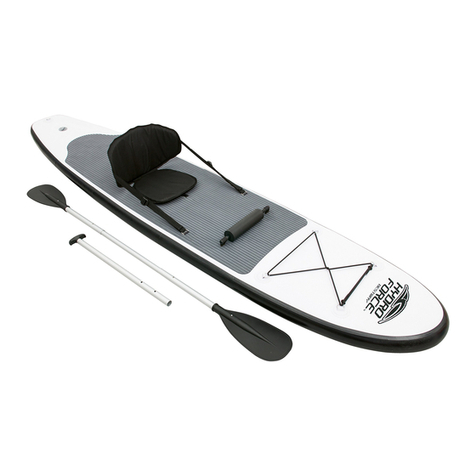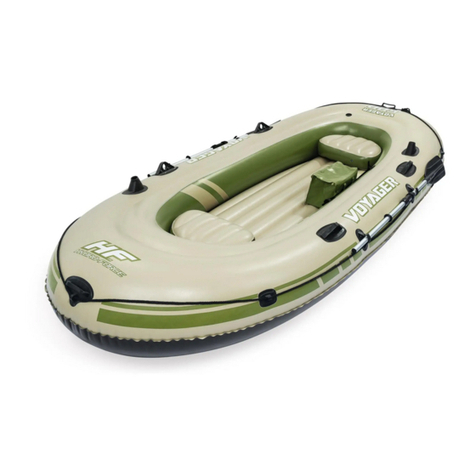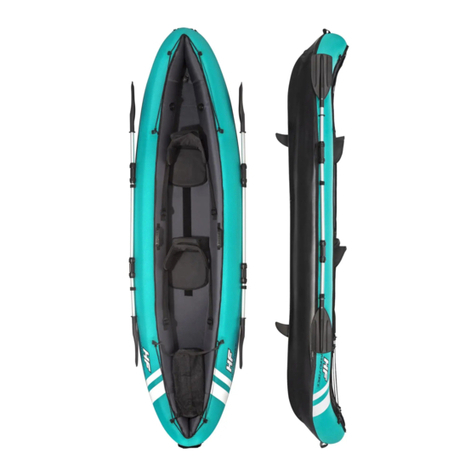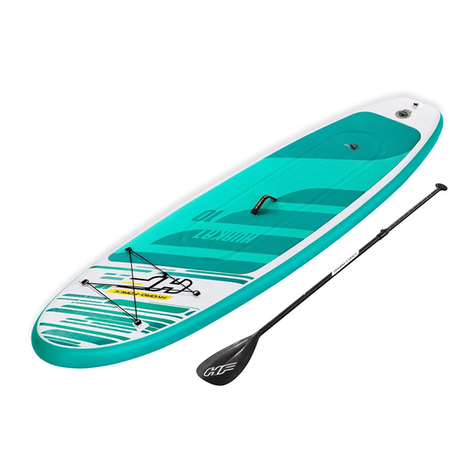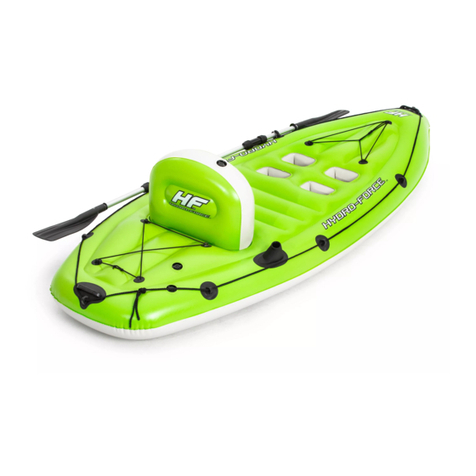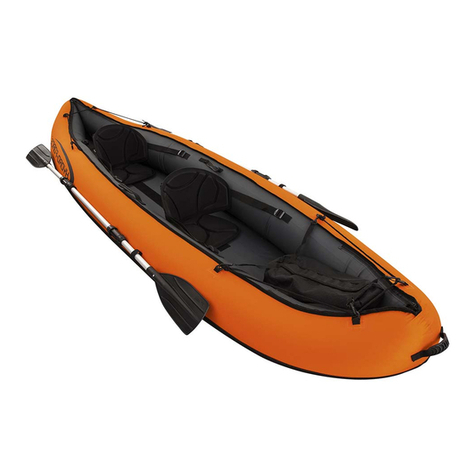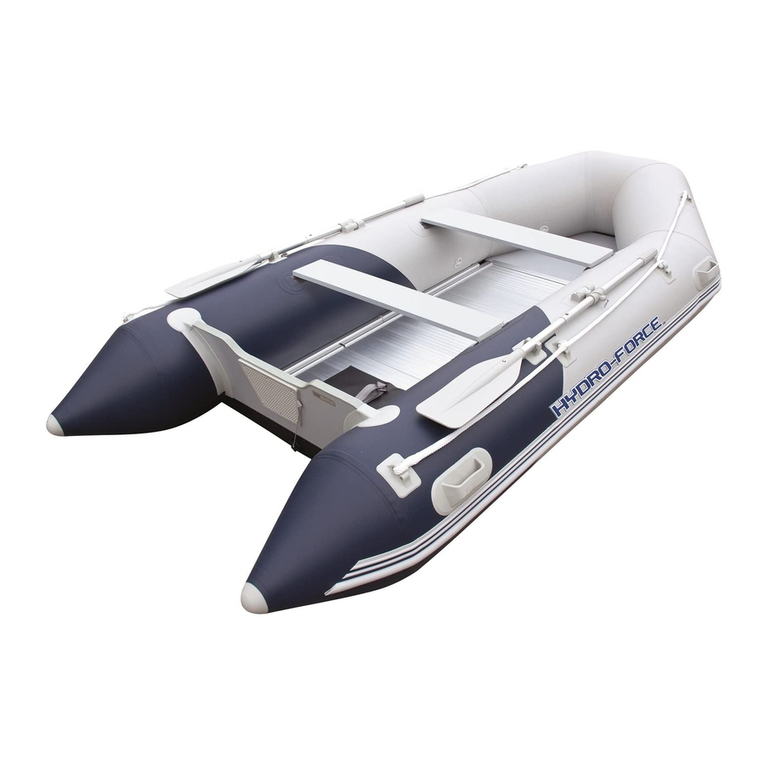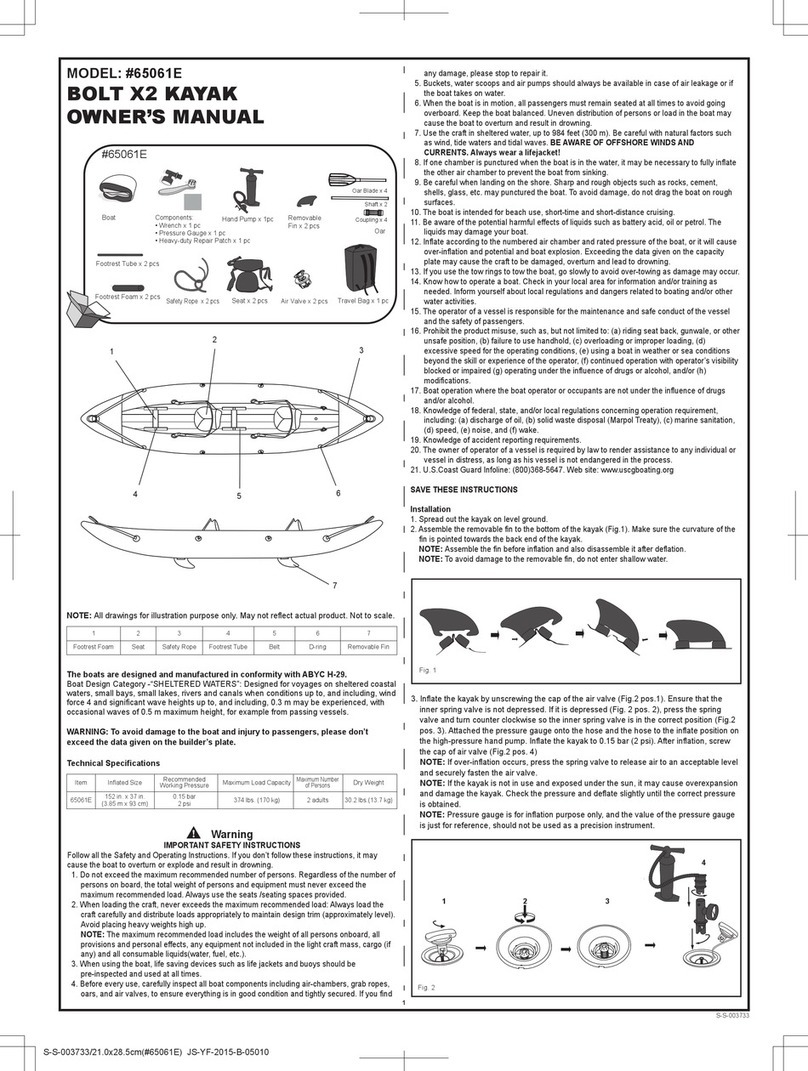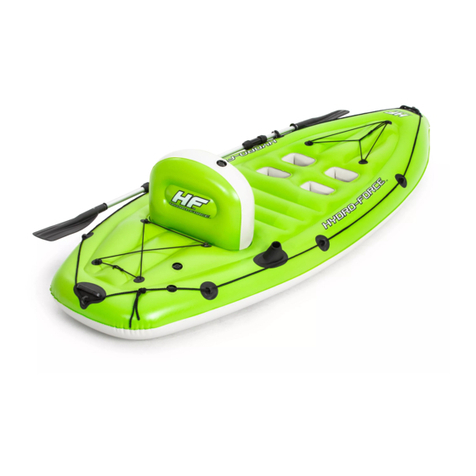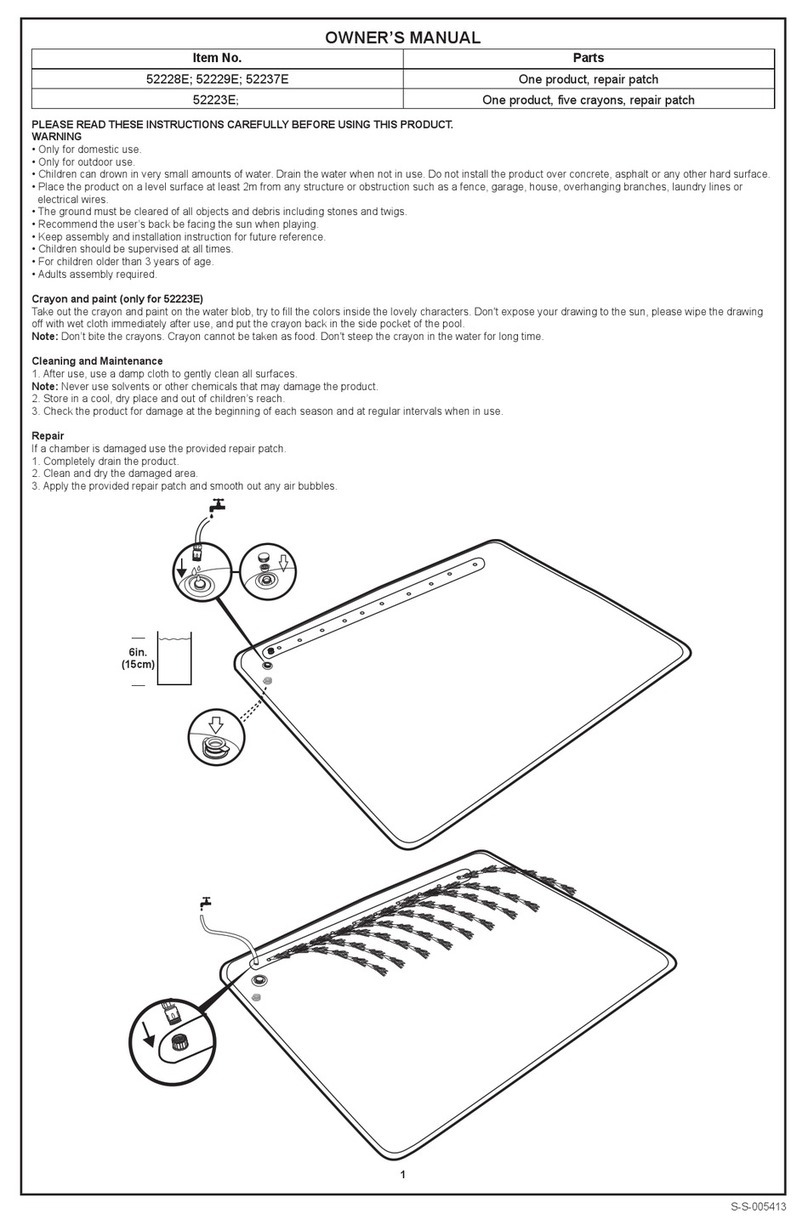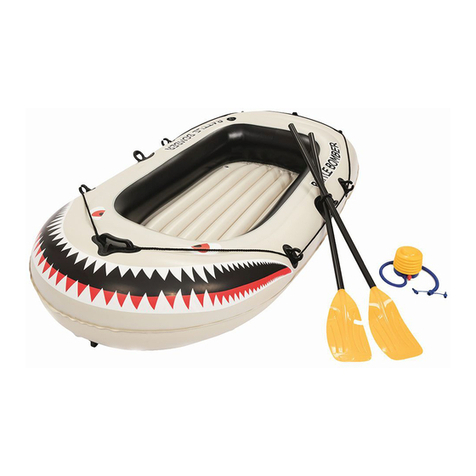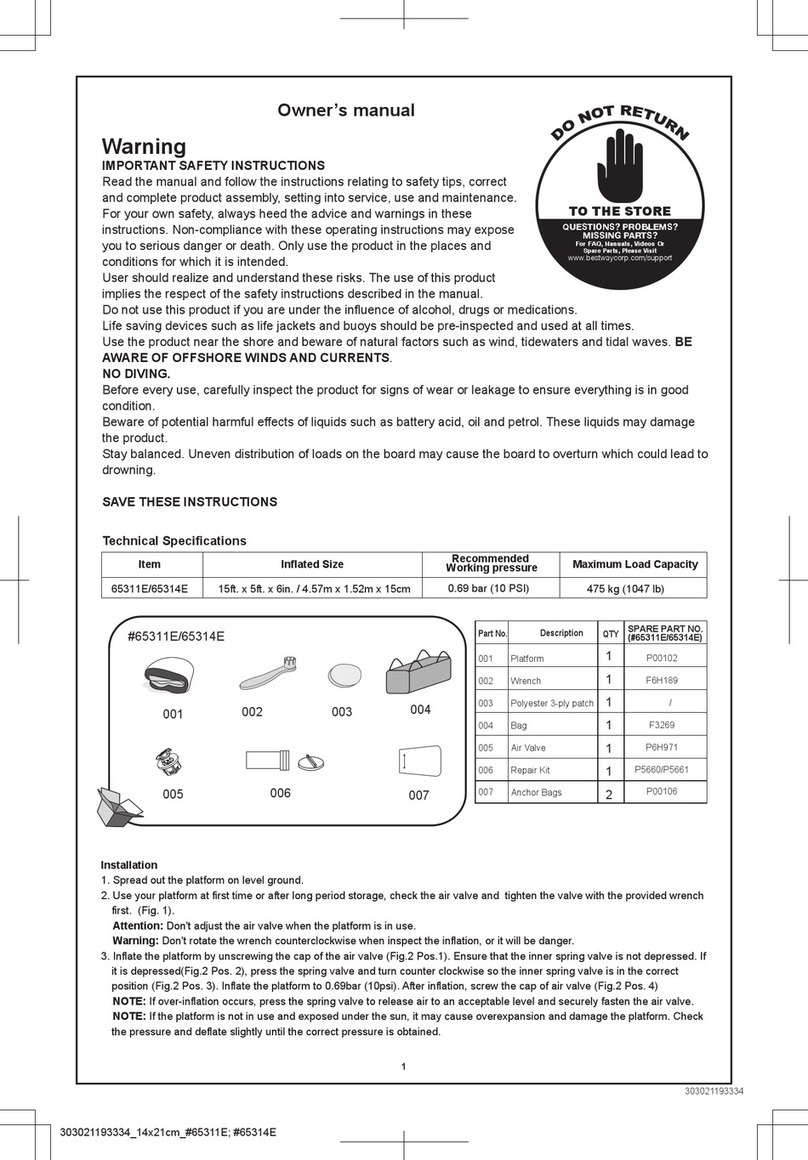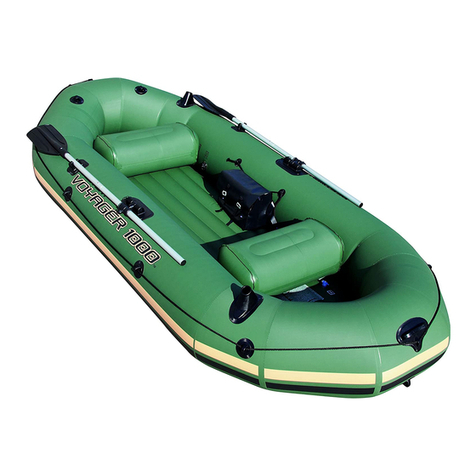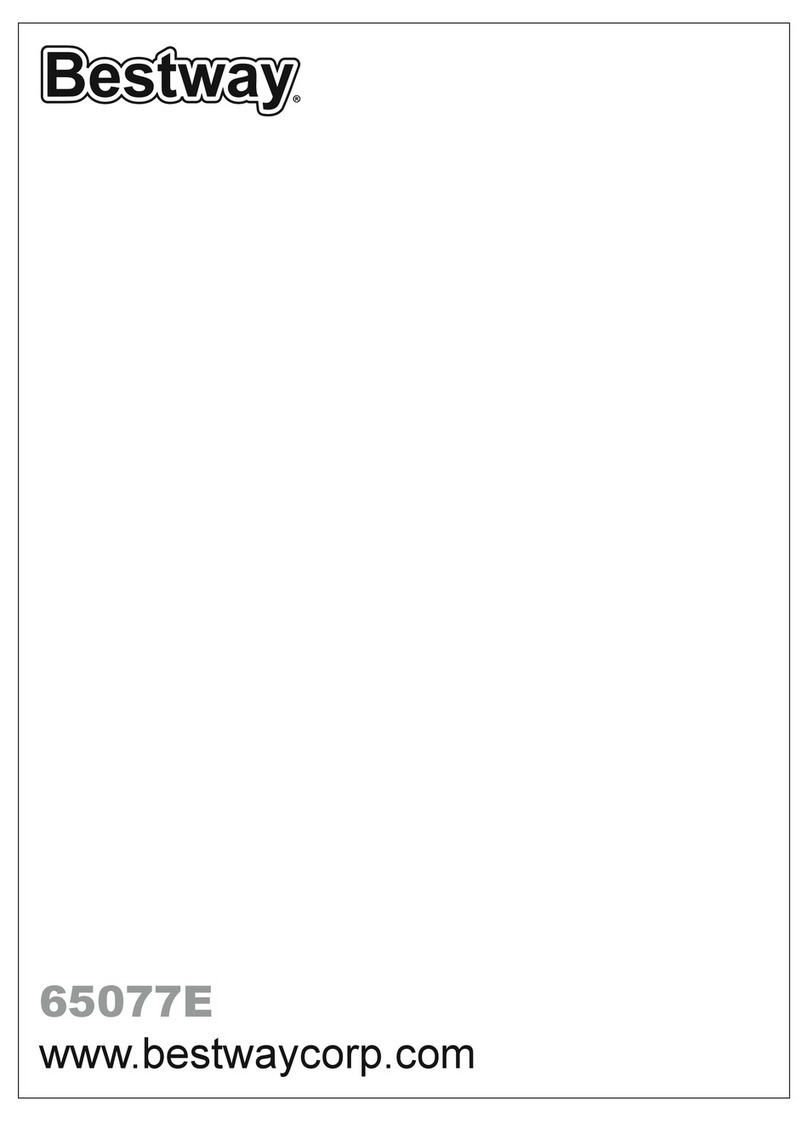
4
WARNING: To avoid damage to the boat and injury to passengers, please don’t exceed the data
given on the builder’s plate.
Technical Specifications
“ ” -Recommended seating arrangement of the occupants.
The boats are designed and manufactured in conformity with ABYC H-28.
Boat Design Category D: Designed for a wind force up to, and including 4 and significant wave
height up to, and including 0.3m, with occasional waves of 0.5m maximum height.
Warning
Note: When the oars are not in use, lock the oars into the Oar Clasps to avoid damage.
NOTE: If over-inflation occurs, press the control stem to reduce air pressure to acceptable levels and
securely fasten the pressure valve.
NOTE: First inflate both side chambers 80%, then fully inflate.
NOTE: The floorboards must be assembled before inflating the hull.
NOTE: Pressure gauge is for inflation purpose only, and the value of the pressure gauge is just for
reference, should not be used as a precision instrument.
Note: Extended exposure to sun can shorten the lifespan of your boat. We suggest not leaving
boats in direct sunlight for more than 1 hour after use.
- Only use Bestway®approved inflation pumps.
- Never use motor-driven high-pressure air pumps as this may result in over-inflation.
- Under and over-inflation will result in safety hazards.
- Always check the inflation pressure before using the boat.
- Never stand on or rest objects on the boat during inflation.
- Never open the cap of air valve while the boat is in use.
- Be sure the valve is tightly closed before using the boat.
IMPORTANT SAFETY INSTRUCTIONS
Follow all the Safety and Operating Instructions. If you don’t follow these instructions, it may cause the boat to overturn or
explode and result in drowning.
1. Do not exceed the maximum recommended number of persons. Regardless of the number of persons on board, the
total weight of persons and equipment must never exceed the maximum recommended load. Always use the seats /
seating spaces provided.
2. When loading the craft, never exceed the maximum recommended load: Always load the craft carefully and distribute
loads appropriately to maintain design trim (approximately level). Avoid placing heavy weights high up.
NOTE: The maximum recommended load includes the weight of all persons onboard, all provisions and personal
effects, any equipment not included in the light craft mass, cargo (if any) and all consumable liquids (water, fuel, etc.).
3. When using the boat, life saving devices such as life jackets and buoys should be pre-inspected and used at all times.
4. Before every use, carefully inspect all boat components including air-chambers, grab ropes, oars, and air valves, to
ensure everything is in good condition and tightly secured. If you find any damage, please stop to repair it.
5. Buckets, water scoops and air pumps should always be available in case of air leakage or if the boat takes on water.
6. When the boat is in motion, all passengers must remain seated at all times to avoid going overboard. Keep the boat
balanced. Uneven distribution of persons or load in the boat may cause the boat to overturn and result in drowning.
7. Use the boat near the shore and beware of natural factors such as wind, tide waters and tidal waves. BE AWARE OF
OFFSHORE WINDS AND CURRENTS.
8. If one chamber is punctured when the boat is in the water, it may be necessary to fully inflate the other air chamber to
prevent the boat from sinking.
9. Be careful when landing on the shore. Sharp and rough objects such as rocks, cement, shells, glass, etc. may
puncture the boat. To avoid damage, do not drag the boat on rough surfaces.
10. If you accidentally fall overboard, grab the safety rope around the boat and climb aboard.
11. When choosing an outboard motor, refer to the technical specifications section of this manual to determine acceptable
horsepower ratings.
12. For electrical motors equipped with batteries, note that battery acid can be caustic, which can cause damage to both
skin and boat materials.
13. For motors which use fuels such as gas, oil or petrol, since fuel is a flammable substance, it should be kept away from
open flames. Further, clean the boat material immediately if fuel spatters onto the boat surface. Be aware of the
potential harmful effects of liquids such as battery acid, oil or petrol. The liquids may damage your boat.
14. Inflate according the numbered air chamber and rated pressure of the boat, or it will cause over-inflation and potential
and boat explosion. Exceeding the data given on the capacity plate may cause the craft to be damaged, overturn and
lead to drowning.
15. If you use the tow rings to tow the boat, go slowly to avoid over-towing as damage may occur.
16. Know how to operate a boat. Check in your local area for information and/or training as needed. Inform yourself about
local regulations and dangers related to boating and/or other water activities.
17. The operator of a vessel is responsible for the maintenance and safe conduct of the vessel and the safety of
passengers.
18. Prohibit the product misue, such as, but not limited to: (a) riding seat back, gunwale, or other unsafe position, (b)
failure to use hanhold, (c) overloading or improper loading, (d) excessive speed for the operating conditions, (e) using
a boat in weather or sea conditions beyond the skill or experience of the operator, (f) continued operation with
operator’s visibility blocked or impaired (g) operating under the influence of drugs or alcohol, and/or (h) modifications.
19. Boat operation where the boat operator or occupants are not under the influence of drugs and/or alcohol.
20. Knowledge of federal, state, and/or local regulations concerning operation requirement, including: (a) discharge of oil,
(b) solid waste disposal (Marpol Treaty), (c) marine sanitation, (d) speed, (e) noise, and (f) wake
21. Knowledge of accident reporting requirements.
22. The owner of operator of a vessel is required by law to render assistance to any individual or vessel in distress, as
long as his vessel is not endangered in the process.
23. U.S.Coast Guard Infoline: (800)368-5647. Web site: www.uscgboating.org
SAVE THESE INSTRUCTIONS
Notes:
Item Size
Recommended
Working Pressure
Maximum Load
Capacity
Maximum Motor
Power
3 hp (2.25 kW)
568.8 lbs.(258 kg)
2 adults
3.5psi
0.24bar
65046E
Dry Weight
7ft.6in. x 51in. x 13in.
2.30m x 1.30m x 33cm
Floor board
pressure
5psi
0.35bar
41.4 lbs.(18.8 kg)
001
004
005
002
003
006
007
1
3
4
4
1 2 3
0.24 bar
(3.5 psi)
2
4
1 2 3
0.35 bar
(5 psi)
2
2
6
78
5
Part No. Description QT
001 Boat
1
003 Airdeck floor 1
1
002 Bench seat
004 Oar 1
pair
005 Air pump
1
006 Drain valve 1
007 Repair kit 1
